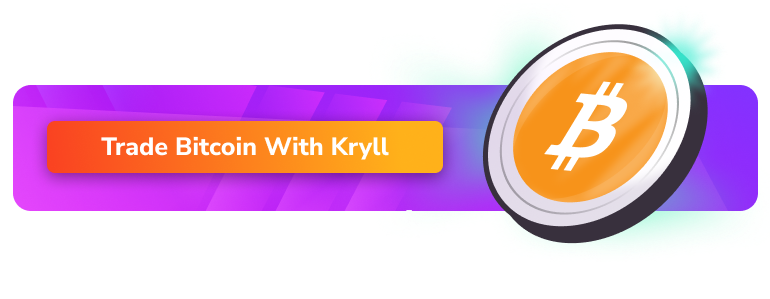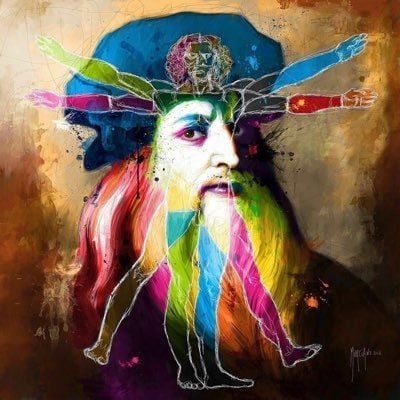
Bitcoin, the world's first cryptocurrency, has consistently made headlines and featured in news front pages, associated with scandals, spectacular financial successes, and the rise of innovative startups and fintechs. Some see it as a revolution, others as a vast scam, and some even envision it as the future global currency... But what exactly is Bitcoin (BTC), where does this digital asset come from, and who is behind its creation?
In this article, we will detail what Bitcoin is, how it operates, how to acquire and use it, as well as the potential risks associated with investing in the crypto market.
What is Bitcoin?
Bitcoin (BTC) is a cryptocurrency, a digital currency designed to act as a payment medium beyond the control of any individual, group, or entity. This eliminates the need for a third party in financial transactions. It is rewarded to blockchain miners for their work in verifying transactions and can be purchased on several exchanges.
Where does Bitcoin come from?
In August 2008, the domain name Bitcoin.org was registered, and the identity of the person who registered it was kept secret using anonymity systems like anonymousspeech.com and WhoisGuard.
Two months later, in October 2008, an anonymous developer or a consortium of developers identifying under the pseudonym Satoshi Nakamoto announced on the Cryptography Mailing List at metzdowd.com: "I am working on a new electronic cash system that is entirely peer-to-peer, without any trusted third party." This now-famous white paper published on Bitcoin.org, titled "Bitcoin: A Peer-to-Peer Electronic Cash System," has become the Magna Carta of how Bitcoin operates today.
Since this revelation, Bitcoin has climbed the ranks to become the most recognized cryptocurrency globally. Its fame has catalyzed the emergence of a multitude of other cryptocurrencies, each aiming to complement or compete with Bitcoin as a payment system by improving transaction speed or strengthening anonymity, for instance. Others have emerged to offer new features, acting as utility tokens, thereby redefining the landscape of blockchains and emerging financial technologies.
What does Bitcoin promise?
On January 3, 2009, the first Bitcoin block was mined - block Zero, also known as the "genesis block". Intriguing for novices and symbolic for experts, this block contains a hidden message: "The Times 03/Jan/2009 Chancellor on brink of second bailout for banks."
To understand the meaning of this message, one must dive into the era's context. In 2009, the world was still reeling from the 2008 financial crisis, the largest since the Great Depression of the 1930s. This crisis, caused by the irresponsibility of certain banks and financial institutions, had dramatic consequences on the global economy. Millions of people lost their jobs and savings due to the financial markets' debacle.
In this context, the Genesis Block message makes perfect sense. Referring to a Times article dated January 3, 2009, about a potential second bailout of banks by the British government, the message appears to criticize the traditional financial system. It seems to suggest that Bitcoin, as a decentralized currency independent of any institution, could be an alternative to this shaky system. It emphasizes the idea that Bitcoin was partly created in response to the instability and injustice of the traditional financial system: a free, decentralized currency serving users, not banks or governments.
Bitcoin's Blockchain Technology
Bitcoin operates thanks to a technology called blockchain. A blockchain is a distributed ledger, a shared database that stores data and a network of machines distributed across the globe necessary for its operation.
Each transaction made on the Bitcoin network is validated, secured by cryptographic signature methods, and recorded in a data block. These data blocks are then added to the existing chain and shared across the network. Each transaction and block is verified by "miners" who receive bitcoins as a reward for this work.
How do miners secure Bitcoin blocks?
Validating a block in the Bitcoin network is a process that involves a mechanism called proof of work (PoW). This process is conducted by miners, who collect a certain number of unconfirmed transactions and assemble them into a block. Once a block is complete, miners strive to sign it by solving a complex mathematical problem that requires computational power proportional to the number of miners on the network so that each block is validated approximately every 10 minutes.
This problem involves finding a number, called a nonce, which, when combined with the block data and passed through a hash function (SHA-256 in the case of Bitcoin), produces a hash that is lower than a certain target value defined by the network. Due to the nature of these mathematical problems, the only way to solve them is by trial and error, which requires a large amount of computational resources. When a miner finds the solution, they announce the new block to the rest of the network. The other miners then check if the solution is correct. If it is, the block is added to the blockchain, and the miner who solved the problem is rewarded with newly created bitcoins and transaction fees included in the block.
Why Bitcoin's Proof of Work?
The main advantage and objective of the Bitcoin system is decentralization, which means that no central entity or institution has control over the currency. Instead, the system's governance and security are ensured by a distributed network of participants, worldwide.
This presents several significant advantages:
- Decentralization makes Bitcoin a resilient system. Unlike traditional financial systems, which can be vulnerable to targeted attacks or institutional failures, the Bitcoin network has no single point of failure. As long as a majority of miners act honestly, the system remains secure.
- Decentralization promotes openness and accessibility. Anyone with an internet connection can participate in the Bitcoin network, whether to make transactions or contribute to transaction validation as a miner. This allows people in regions of the world poorly served by traditional financial institutions to have access to a digital means of value exchange.
- Decentralization encourages transparency and auditability. All Bitcoin transactions are recorded on a public blockchain, which means that anyone can verify each bitcoin's history. This transparency can help prevent fraud and money laundering.
More generally, decentralization offers protection against censorship and governmental interference. Bitcoin transactions cannot be blocked or reversed by a third party, meaning users have full control over their funds. This is particularly important for people living under oppressive regimes or in situations where access to traditional financial services is limited or denied.
What does blockchain technology bring?
In addition to its decentralization, Bitcoin's blockchain provides network transparency and tamper-proof features for several key reasons:
- Transparency: The Bitcoin blockchain acts as a ledger that records all financial transactions made. Each block of the blockchain represents a page of this ledger. This ledger is distributed across thousands of computers worldwide, making each transaction visible to anyone who wants to see it. Moreover, you can download the Bitcoin blockchain at any time and view transactions in near real-time.
- Tamper-proof: The blockchain uses advanced cryptography to ensure that each block is digitally signed in such a way that modifying or altering an entry invalidates all preceding entries. This makes each entry in the blockchain immutable. Furthermore, to corrupt the system, one would have to take control of over 50% of the computers on the system, which is extremely hard to achieve.
Compared with the traditional financial system, cryptocurrency transactions are transparent due to their public ledger and the ability to audit transactions. While the identities of the parties involved are often anonymous, the transparency of transactions helps prevent fraudulent activities and provides a certain level of trust to users.
Learn more about Bitcoin (BTC)
How to mine Bitcoin?
As previously presented, mining Bitcoin is a process that involves solving complex mathematical problems, called "hashes," that serve to validate transactions and secure the Bitcoin network. In the beginning, it was possible for anyone with a personal computer to participate in Bitcoin mining. However, with the increase in Bitcoin's popularity and the addition of more miners to the network, the difficulty of these problems has increased exponentially.
To stay competitive, miners began to design and use specialized machines called ASICs (Application-Specific Integrated Circuits) that are designed to solve these hash problems much more efficiently than personal computers. However, these machines can be costly, consume a lot of electricity, and emit a lot of heat which can make mining unprofitable for some individuals and certain geographical areas. In response to this, miners began to group together into "mining pools". These pools combine the computational power of several miners to solve hash problems more quickly. When a pool solves a problem and receives a Bitcoin reward, this reward is then divided among the members of the pool, allowing each to receive a smaller but more regular share of Bitcoin. This approach has allowed Bitcoin mining to remain accessible and provide a less erratic and irregular revenue stream.
How to buy Bitcoin?
The purchase of Bitcoin and other cryptocurrencies is facilitated by the use of cryptocurrency exchange platforms. Platforms like Binance, Bybit, KuCoin, and Coinbase offer a simple and secure way to buy, sell, and store cryptocurrencies. Each platform offers unique features and benefits, so it's important to do research to choose the one that best suits your needs.
To buy Bitcoin or any other cryptocurrency on these platforms, you simply create an account, fund it with fiat currency (like the U.S. dollar) through your bank account, credit card, or debit card, and then you can buy the amount of Bitcoin or other cryptocurrency you want.
It's important to note that these platforms are not limited to buying and selling Bitcoin. Most of these platforms support a wide variety of cryptocurrencies, including altcoins like Ethereum, as well as other assets like ERC20 tokens based on the Ethereum blockchain. For example, Kryll (KRL), a token from the Kryll.io ecosystem that allows users to create and execute automated trading strategies, can also be purchased on some of these platforms.
How to use Bitcoin?
Bitcoin is primarily a means of payment. To use it as such, the first step is to have a cryptocurrency wallet. A cryptocurrency wallet is a kind of digital wallet that stores the private and public keys needed to conduct transactions with Bitcoin. There are several types of wallets, including online wallets, mobile wallets, desktop wallets, and hardware wallets such as Ledger keys. Each type has its own advantages and disadvantages in terms of security and convenience.
Once you have a wallet and have Bitcoins to spend, you can use them to purchase goods and services from merchants who accept Bitcoin as a means of payment. Merchants who accept Bitcoin usually make this known by displaying a sign or logo indicating "Bitcoin Accepted Here". To make a transaction, you simply scan the merchant's QR code with your Bitcoin wallet and confirm the payment. For even more convenience, it is possible to use platforms like Bitrefill where it is possible to buy Apple, Amazon, Zalando, Carrefour gift cards directly in BTC, ETH, and other altcoins.
In addition to using it as a means of payment, Bitcoin can also be used for other purposes. For example, it can be used to send money around the world without needing an intermediary, such as a bank or money transfer service. It can also be used as an investment, where you buy Bitcoins in the hope that their value will increase over time.
Is investing in Bitcoin a good idea?
Investing in Bitcoin has attracted many investors and speculators, mainly due to the strong appreciation of its price over the years. For example, the price of Bitcoin increased by more than 300% in 2020, going from $7,167.52 on December 31, 2019, to $28,984.98 a year later. It continued to climb in the first half of 2021, reaching a historic high of $68,990 in November 2021.
However, it's important not to forget that investing in Bitcoin carries risks, whether in the very short term because of its volatility, in the medium term during bearish cycles, and in the longer term as no one knows the future and Bitcoin could very well disappear (even though this remains very unlikely because of its very concept). One of the main risks is its volatility. The price of Bitcoin is known for its rapid and significant fluctuations, which can result in significant losses for investors who could not wait. For example, after reaching a peak in November 2021, the price of Bitcoin fell significantly in 2022. In March 2022, it was $47,454, but by November 2022, it had fallen to $15,731. This price drop was attributed to various factors, including inflation, rising interest rates, supply chain issues due to COVID, the war in Ukraine, and instability of some cryptocurrencies and major exchanges.
Therefore, although Bitcoin can offer potentially high returns, it is also associated with a high level of risk. Investors interested in Bitcoin should exercise caution and not invest more than they are willing to lose. It is also recommended to invest small amounts regularly rather than invest all your capital at once. In this regard, we invite you to read our article on this technique called "DCA" available here.
How to trade Bitcoin?
Trading Bitcoin and Altcoins can be done in two main ways: manually or automatically using trading bots.
- Manual trading means you buy and sell Bitcoin yourself. You need to closely follow the markets, perform analysis to predict how prices will evolve and decide on the best time to buy or sell. This can be exciting, but it also requires a lot of time and effort.
- Automatic trading, on the other hand, uses trading bots to perform transactions on your behalf. These bots can follow the markets 24/7, and make trading decisions based on rules and strategies you set. This can save you a lot of time and reduce the stress of trading.
A platform like Kryll.io can help you with both types of trading. Kryll.io offers free monitoring of your cryptocurrency portfolio, which can help you keep an eye on your investments. In addition, the platform offers a complete trading terminal that can assist you in your manual transactions. But one of the biggest advantages of Kryll.io is its offering of advanced trading bots. You can create your own trading bot or rent bots created by other users. This can help you automate your trading and potentially increase your profits. We invite you to learn more about "How to optimize your automated trading" in our guide available here.
What to think of Bitcoin in 2023?
It's undeniable that Bitcoin has revolutionized our world, upsetting our traditional notions of centralization. It has shown that it is possible to have a monetary system that is not controlled by a single entity and even though this financial revelation/revolution is over 10 years old, it still offers endless technological possibilities and unprecedented societal innovations!
We are only at the beginning of this journey and cryptocurrencies in general are still largely unexplored territories. As individuals and as humanity, we still have a lot to learn and discover in this new fascinating universe. The Bitcoin revolution is just beginning and it will be exciting to see where it will take us in the coming years!

Happy Trading,
Website: https://kryll.io
Twitter: @Kryll_io
Telegram EN: https://t.me/kryll_io
Telegram FR: https://t.me/kryll_fr
Telegram ES: https://t.me/kryll_es
Discord: https://discord.gg/PDcHd8K
Reddit: https://reddit.com/r/Kryll_io
Facebook: https://www.facebook.com/kryll.io
Support: support@kryll.io



